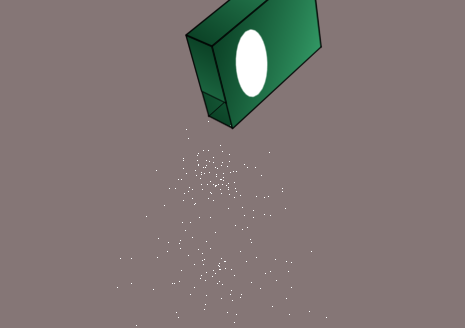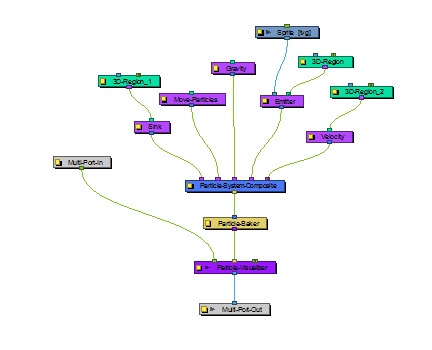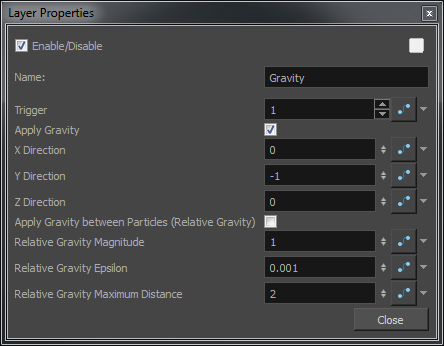
The Gravity effect lets you define the gravity of the particle system.


Gravity Properties
| Parameter | Description |
| Name | Allows you to change the name given to the node. |
| Trigger |
An on/off switch using binary code. 1 = on, 0 = off. |
| Apply Gravity |
Forces the particle system to adhere to the force of gravity. Values must be entered into the Direction fields, along with enabling this option, in order for it to work. If this option is not selected, the particle system will explode outwards from its origin point. |
| X Direction |
Directs the particle stream to the left or right (along the X-axis). A value of 1 forces the particle stream to the right, while a value of -1 forces the particle stream to the left. |
| Y Direction |
Directs the particle stream up or down (along the Y-axis). A value of 1 forces the particle stream to flow upwards, while a value of -1 forces the particle stream to flow downwards. |
| Z Direction |
Directs the particle stream forwards or backwards (along the Z-axis). A value of 1 forces the particle stream to flow forwards, while a value of -1 forces the particle stream to flow backwards. |
| Apply Gravity between Particles (Relative Gravity) |
Applies gravity between each particle, taking their masses into account. The mass of the particle can be specified at emission time via the Sprite or Image Emitter. |
| Relative Gravity Magnitude |
Adjust the amount of gravity applied between particles. |
| Relative Gravity Epsilon |
The acceleration falls off the further the particles get from each other. When the particles are very close to each other, the acceleration becomes very high, so you should define a small region around the particles so they never actually touch. |
| Relative Gravity Maximum Distance |
Adjusts the radius beyond which particles do not affect each other. |